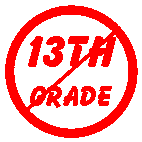Organization
James Hayes-Bohanan, Ph.D.
Assistant Professor, Geography

| Writing Tips
Organization James Hayes-Bohanan, Ph.D. Assistant Professor, Geography |
 |
The use of sentences and paragraphs is crucial. Each sentence should convey a specific idea, and the sentences should be organized into paragraphs, each of which has a central theme. The first sentence of each paragraph should indicate the topic of the entire paragraph. Here is a way to test whether your paragraphs are well organized: Read only the first sentence of each paragraph in your paper. If these sentences together convey the basic ideas of your paper, the organization of the paper is probably good.
Avoid starting a paper with a string of facts that have not been put into some sort of context for the reader. An effective paper often begins with a very short paragraph that alerts the reader to the topic under discussion and the course that the author plans to follow in the rest of the paper. For example, a paper on tropical deforestation might begin with a very general orientation, incidating where tropical forests are found and what the major causes of deforestation have been. The introduction would end with a sentence such as this:
"This paper begins with a discussion of the ecology of tropical rain forests, followed by a brief history of human population growth in the Amazon region of Brazil. It then examines the causes of deforestation that have been identified in the state of Rondônia , followed by a discussion of the role government policy has played. The paper concludes with a discussion of possible areas for further research."If a two- or three-page paper has no distinct paragraphs, this suggests that the writer has not carefully organized his or her thoughts prior to writing. Please do not attempt to remedy the situation, however, by arbitrarily starting new paragraphs at regular intervals. A few minutes spent planning and outlining the paper (even if it is short) will result in a paper that is well-organized and easy to read.
The key to well-organized writing is the use of outlines. Fortunately, most word-processing programs now make this easy to do. In Microsoft Word, for example, it is easy to create an outline and then toggle back and forth between normal and outline views. As the paper develops, an outline heading or subheading can be moved to a more appropriate place in the document, and the text will be adjusted accordingly.
If the paper is more than three or four pages long, it will need subheadings so that the reader will have a sense of progress through the paper. These headings should not be a surprise to the reader: they should generally conform to the topics anticipated in the introduction (see above).
If your assignment is a research paper, it should be organized around some research question. The title should allude to the question in some way, and the question should be posed during the first paragraph. Alternatively, the first few paragraphs can provide the background for the question, which then comes at the end of the introduction. The question should then be addressed directly in the conclusions (either by answering it or by explaining why you are not answering it).
If your assignment is to write a review (for example, of a book or journal article), do not write a summary. A summary merely repeats the content of the original work in condensed form; a review may include a synopsis of the work under discussion, but it is written from a position of some distance from the original work, and reflect the reviewer's own perspective on the work. (Providing perspective is no excuse for using the first person)